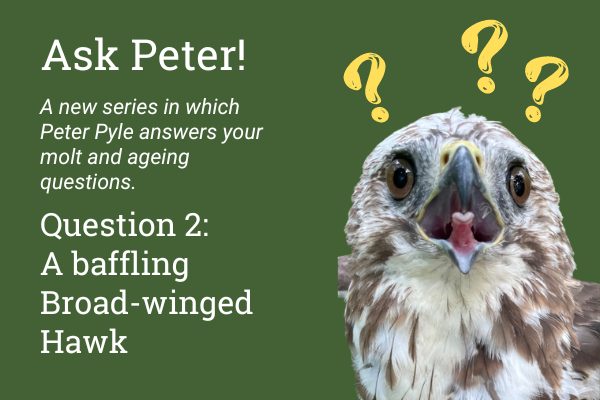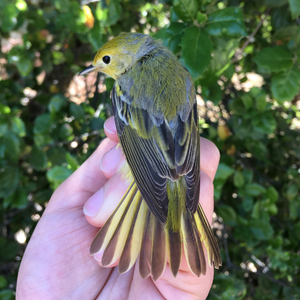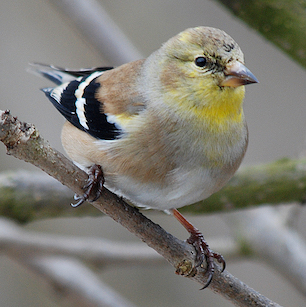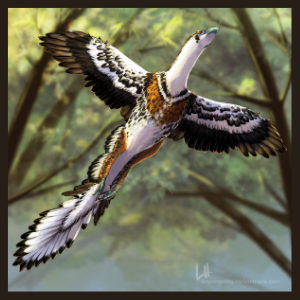If you have a molt/ageing question for Peter, please send good photos, date, and location where the bird was banded/photographed to our communications specialist Meredith Walker at mswalker_AT_birdpop.org. Meredith will compile submissions and about once a month Peter will select one to answer.
These photos were submitted by MAPS bander Martha Caskey, who banded this Broad-winged Hawk outside of Ottawa, Ontario on July 7, 2022.
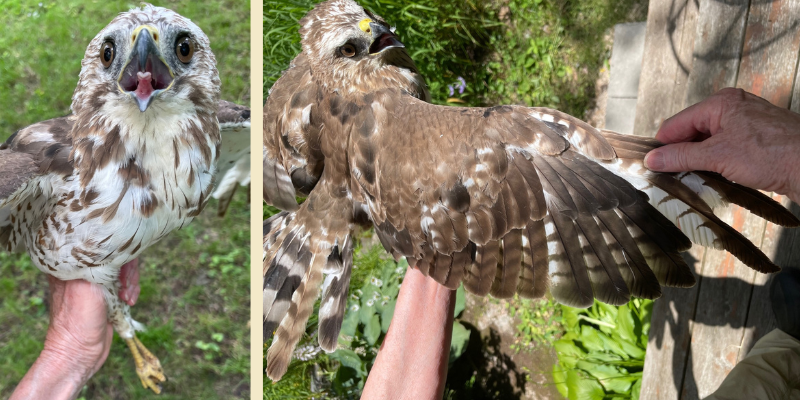
Photos by Martha Caskey.
When I was 15 years old, in the early 1970s, I captured a Broad-winged Hawk at my landbird banding station in Maryland and recall the thrill of having such a large bird in the hand (carefully!). I also recall being completely clueless about its molt and age. It's nice to know we have come a long ways in these departments since then.

The streaky head and breast along with worn unmolted wing and tail feathers make this a second year (SY) Broad-winged Hawk, of about a year in age. The majority of the feathers are still juvenile, grown in the nest last summer. But it has also begun it's second prebasic molt, now universally considered the complete or near-complete molt that occurs at 8-12 months of age in all bird species. In addition, I believe that a few back and flank feathers are formative, grown during a limited preformative molt during its first 3-8 months of life. These are the richer brown feathers of the lower back (fresher than the juvenile feathers but not as dark as the newly grown second basic feathers) and the barred feathers of the underparts visible above the hand holding the bird.

For diurnal raptors, especially, molt terminology has been confused over the years. Traditionally most species were considered not to have a preformative molt, and so the complete molt that this bird has now commenced was variously referred to as the postjuvenile molt, preformative molt, first prebasic molt, or second prebasic molt. In 2005, in preparation for Part 2 of my Identification Guide, I tackled this question with specimens and documented that these raptors do, in fact, have a limited body-feather molt in the first year, prior to the second prebasic molt, that we can now consider the preformative molt. Diurnal raptors thus molt like many passerines that have a partial preformative molt during their first few months of life and then a complete second prebasic molt following their first breeding season. Details on the preformative molt in diurnal raptors can be found here.
Another fun thing to look at with this bird is the sequence in which flight-feathers are being replaced during the second prebasic molt. Molt sequences are quite fixed among species of bird families. In Accipitrid raptors (eagles, osprey, hawks, kites, etc. but not falcons), primaries molt in a "distal" sequence, from the innermost p1 to the outermost p10, as is common to most bird families. On this bird's wing, note that the inner 4 primaries, p1-p4, are new and fully grown, p5 is about 90% grown, p6 is about 50% grown, and the outer four primaries, p7-p10, are old and juvenile. Primary molt is hence proceeding just as expected for this family and, barring a damaged follicle, I never see exceptions to this sequence.

Replacement sequences of secondaries in birds are a bit more complex and have been less studied than that of primaries; traditionally many thought that secondaries were replaced rather randomly, especially in larger non-passerine species. But, again, it turns out that these sequences are quite fixed within families. Most birds begin molt of secondaries with the middle tertial (s8 in passerines) from which replacement proceeds bidirectionally, proximally to the inner tertial as well as distally toward the outer secondaries. Another sequence then begins proximally (inward) from the outermost feather, s1, typically commencing when primary molt has reached p5 or p6. In your passerines, thus, s8 molts first, followed by s1 some time later, and the two sequences converge, with s6 or s5 usually being the last father replaced. Broad-winged Hawks also show these two patterns, and in our bird you can see that tertials are molting and that the outermost secondary, s1, has dropped on both wings, as indicated by a larger gap than usual between the inner primary p1 and the outer secondary (now s2). But, wait a minute. Looking closely, isn't there another secondary in molt four feathers in from the gap? Indeed, this is s5.
Many large species of birds, including those of Accipitridae, are "diastataxic," meaning that evolutionarily a secondary has been lost between what we now call s5 and s6, as compared to most other bird families that diverged from the diastataxic lineage long ago. It turns out that most or (probably) all diastataxic species have an extra molt center that proceeds inward from s5, and this Broad-winged Hawk is typical in this regard (again, I almost never see exceptions to sequences among secondaires within families of birds). Unlike passerines, which all have nine secondaries, most larger non-passerines have more secondaries, up to 30 or more in albatrosses; Broad-winged Hawks have 13 of 14 secondaries including the three tertials. If we follow our replacement paths, we can see that the last secondaries replaced will be s4 and those among s8-s10. Many diurnal raptor and other large diastataxic birds may not have enough time to complete molt of all flight feathers, retaining one or more of these juvenile secondaries for an extra year, and enabling ageing of TYs in summer or, if older feathers are retained, ATYs. More on ageing diastataxic species by retained secondaries can be found here.
Falcons, by the way, have completely different replacement sequences among primaries and secondaries, which they share in common with, of all things, parrots! Additional details on flight-feather molt sequences in diurnal raptors and parrots can be found here and here.

Finally, let's look at replacement sequences among the tail feathers or rectrices. Most bird species generally commence rectrix molt by dropping the central feathers (r1) first and then proceeding outwards on both sides of the tail, to the outermost (r6) in species with 12 rectrices, including passerines and diurnal raptors. But this sequence is not always as invariable as those of the primaries and secondaries; many birds seem to replace r6 prior to other feathers among r2 to r5. Most raptors, furthermore, have been documented molting their rectrices in sequence r1-r6-r3-r4-r2-r5, and this appears to be the case with this Broad-wing, at least on the left side of the tail (r5 seems to have dropped prematurely on the right side, perhaps due to accidental feather loss). In those raptors that do not complete replacement of rectrices, usually only including larger species such as eagles, a retained juvenile r2 and/or r5 following the molt can indicate a TY bird the following year.
As with our first bird in this "Ask Peter" series, a Yellow Warbler, we can easily devote a thousand words (1064, to be exact) to a few photos when it comes to analyzing feathers, molts, and plumages. Keep those interesting photos coming!


